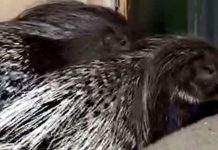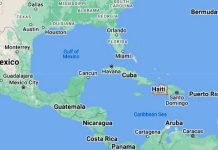
Nov. 16 (UPI) — As the federal investigation continues into one of the most fabled prison escapes of all time — the 1962 break from Alcatraz — new technology is helping to preserve part of the story.
The FBI gave the National Park Service, which now runs Alcatraz as a tourist attraction and maintains the archives, 3D-printed replicas of the decoy heads used by the convicts to fool prison guards during the nightly bed checks. Frank Morris and brothers John and Clarence Anglin placed the dummy heads in their beds next to the covers during the checks as they spent months digging a tunnel out of their cells to freedom.
The men have not been found in the 56 years since the escape, which was dramatized in the 1979 Clint Eastwood Hollywood movie Escape from Alcatraz.
“The 1962 escape from the United States Penitentiary at Alcatraz remains one of the most infamous prison escapes of all time,” U.S. Marshal Don O’Keefe said in a statement to UPI.
“None of the escapees have ever been located, the United States Marshals Service continues to investigate any and all credible leads. Some may believe that we’re chasing shadows, but our efforts are meant not just to perform due diligence, but to be a warning to other fugitives, that U.S. Marshals don’t give up because of the passing of time.”
Alcatraz, located in San Francisco Bay in California, closed less than a year after the escape.
The FBI manufactured the new heads because the originals — creatively crafted from toilet paper, cardboard, cement chips and human hair from the floor of the prison barbershop — have deteriorated.
While the originals remain as evidence, a team from the FBI’s Operational Project Unit at the FBI Laboratory in Quantico, Va. scanned the heads using 3D laser technology at the Golden Gate National Recreation Area Park Archives and Records Center more than a year ago to make the replicas. The lab even attached human hair to the models to match the originals.
An FBI image of one of the decoy heads crafted by the inmates that was used in the June 11, 1962, escape attempt. Photo courtesy FBI
“The FBI’s lab uses this same technology for the high-resolution scanning of bomb components, firearms and crime scenes for use in FBI investigations and operations,” John F. Bennett, special agent in charge of the San Francisco field office, said in a statement. “We are honored to use this expertise to provide the National Park Service with accurate models of the Alcatraz decoy heads for many generations to come.”
The decoy heads were placed on display Thursday at the Alcatraz park archives of Golden Gate National Recreation Area.
According to the Federal Bureau of Prisons, Morris and the Anglin brothers made their break for freedom on the night of June 11, 1962. A fourth conspirator, Allen Clayton West, believed to be the mastermind of the plot, did not join the other three in the escape attempt and remained in his cell.
The ingenuity of the escapees did not stop with the heads and makeshift digging tools. They used prison-issued raincoats to make crude life vests and a pontoon-type raft to help them get across San Francisco Bay. They stole a concertina, removed the keys and used it to inflate the raft.
There remains considerable debate about whether the three escapees survived. There has never been any solid evidence to indicate any of them made it out of the bay. In 1979, the U.S. Marshal Service took over the case from the FBI and continues to investigate tips in the case.
“We’ll do so until we determine that one of the escapees is dead, or until their 99th birthday, where we’ll re-evaluate the case,” O’Keefe told KNTV-TV Thursday.





